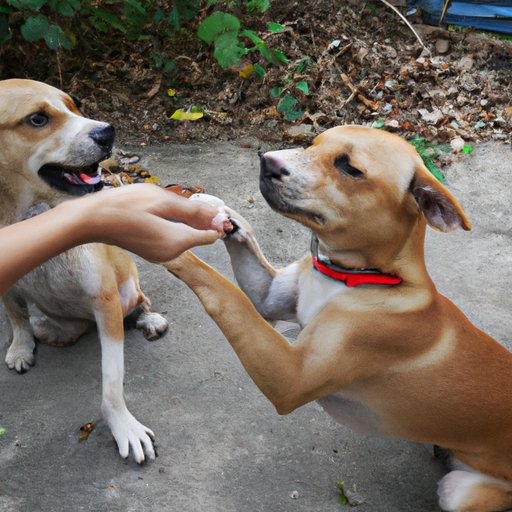How to Introduce Dogs: A Guide to Safe and Successful Dog Introductions
Introducing dogs to each other can be a rewarding and enriching experience for both you and your furry friends. However, it’s important to approach introductions with caution and care to ensure the safety and well-being of all dogs involved. In this guide, we’ll explore strategies for properly introducing dogs, interpreting body language, bonding activities, behavior management, training exercises, safety considerations, and more. Let’s dive in!
Start with the Basics
Before introducing your dogs, start by choosing the right time, location, and pace. Ideally, introductions should take place in a neutral location, such as a park or a friend’s backyard. Make sure both dogs are up-to-date on vaccinations and are healthy before introducing them.
To prepare for the introduction, consider exchanging items between the two dogs so they can get used to each others’ scents. This can be done by giving each dog a toy or blanket to take home before the introduction.
During the introduction, expect some level of caution or reservation from both dogs. It’s important to go at a pace that’s comfortable for both dogs, giving them ample opportunity to sniff and investigate each other.
Body Language Cues
Paying attention to dogs’ body language is crucial when introducing them. Dogs use body language to communicate their emotions and intentions to each other. Understanding these cues can help prevent misunderstandings and potential conflicts.
Common body language gestures include tail position, ear position, eye contact, and vocalizations. A wagging tail, for example, doesn’t always mean a dog is happy. A stiff, high tail wag may indicate a dog is feeling anxious or defensive.
It’s important to interpret body language before and during the introduction process. Signs of stress include yawning, lip licking, and pacing. If one dog begins to exhibit these signs during the introduction, it may be time to separate the dogs and try again another day.
Activities to Bond
Once the initial introduction is complete, it’s important to continue bonding activities to enhance the relationship between the dogs. Activities that encourage play and interaction can help build trust and respect between the dogs.
Activities can vary depending on the dogs’ personalities and preferences. Some dogs enjoy chasing games, while others may prefer tug-of-war. Walking the dogs together or taking them to a dog park can also be fun ways for them to socialize.
When introducing dogs from different households, it’s important to continue monitoring their interactions. It’s possible that a new dog may not want to play right away and may need more time to warm up. Additionally, dogs playing together may experience escalating excitement and potential conflicts.
Behavior Management
Understanding the different dog personalities and how they may react during introduction is also crucial. Dogs who are fearful or anxious may react by growling or snapping, while overly friendly dogs may be overwhelming to more reserved dogs.
To manage behavior during and after the introduction, try to avoid punishing bad behavior. Instead, focus on positive reinforcement by rewarding good behavior with treats or praise.
If conflicts do arise, it’s important to take steps to safely break up any fights or aggressive behavior. This may include using a loud noise to startle the dogs or using a spray bottle of water to separate them.
Training Exercises
Training exercises can also help accelerate the bonding process by creating positive associations between dogs. Simple training exercises like “sit” or “stay” can be done with both dogs at the same time, rewarding both dogs with treats for good behavior.
When it comes to training, it’s important to adapt to different dog personalities. Some dogs may require more patience or a slower pace. Others may be ready for more advanced training exercises.
Many dog owners have reported success using training to strengthen the bond between their dogs, even in cases where the dogs were initially timid or aggressive towards each other.
Safety Considerations
Keeping safety in mind during introductions is crucial. Warning signs that things may not be going as planned include growling, lunging, and snarling.
To safely and quickly break up any fights or aggressive behavior, try using a spray bottle of water or loud noise to startle the dogs. If the situation escalates, try separating the dogs by pulling them apart by their hind legs or back legs.
Conclusion
Introducing dogs to each other doesn’t have to be a daunting experience. With the right preparation, understanding of behavior cues, bonding activities, behavior management, training exercises, and safety considerations, dog introductions can be a fun and rewarding experience for both dogs and owners.
Remember to remain patient, positive, and committed to the process of introducing dogs. With time and effort, your furry friends may soon become the best of friends.
